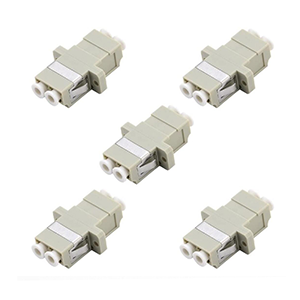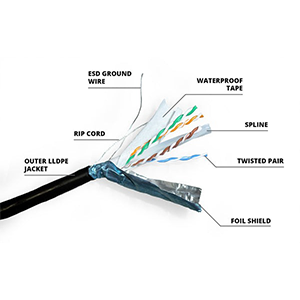Optical couplers and fiber splitters play an important role in fiber optic communications. This article will compare the similarities and differences between these two fiber optic devices. We will first define the working principle and structural characteristics of optical couplers, and explain their main parameters and performance indicators; then, we will explain the working principle and structural characteristics of fiber splitters, and introduce their main parameters and performance indicators.
Next, we will focus on comparing the differences between optical couplers and fiber splitters in terms of working principles, structural composition, application scenarios, performance indicators, etc., and analyze the differences between the two in terms of signal transmission mechanism, energy transmission method, manufacturing process, etc. Finally, we will provide the principles for selecting suitable optical couplers or splitters according to specific application scenarios, and explain the key factors that should be considered when selecting.
Basic concepts of optical couplers
Let me introduce you to the basic concepts of optical couplers in detail.
Operating principle and structural features of optical coupler:
(1) Working principle:
- Optical coupler uses the principle of optical coupling to transmit signals
- Distribute or merge input optical signals to multiple output ports
- Realize functions such as splitting, combining and coupling of optical signals
(2) Structural features:
- Composed of input optical fiber, output optical fiber and coupling structure
- The coupling structure usually adopts optical waveguide or optical fiber fusion
- Can realize multiple port combinations such as 2×2, 1xN, NxM
In general, optical coupler is an optical device that realizes optical signal distribution, merging and coupling. Its unique working principle and structural features make it play an important role in optical communication networks.
Main parameters and performance indicators of optical couplers:
(1) Main parameters:
- Number of input/output ports
- Central operating wavelength and bandwidth
- Coupling ratio (coupling coefficient)
- Optical loss (insertion loss, isolation)
(2) Performance indicators:
- Insertion loss: total loss of optical signal from input to output
- Isolation: crosstalk suppression capability between output ports
- Uniformity: coupling ratio of each output port is close to ideal
- Polarization dependence: sensitivity to polarization state of optical signal
- Bandwidth: frequency range in which optical coupler can work
These key parameters and performance indicators directly determine the applicability and performance of optical coupler in optical communication system.
Basic concept of optical fiber splitter
Let me introduce the basic concept of optical fiber splitter to you in detail.
The working principle and structural features of the fiber optic splitter:
(1) Working principle:
- The fiber optic splitter is a special form of optical coupler
- Selectively distribute the input optical signal to multiple output ports
- Realize the distribution and diversion of optical signals between different optical fiber lines
(2) Structural features:
- Usually composed of 1 input port and N output ports
- Branching is achieved by fiber fusion, optical waveguide integration, etc.
- Symmetrical and asymmetric energy distribution ratios can be achieved
In general, the fiber optic splitter is an optical coupling device specially used for optical signal distribution. Its unique working principle and structural features make it widely used in optical fiber communication networks.
Main parameters and performance indicators of fiber splitters:
(1) Main parameters:
- Number of ports (1xN)
- Central working wavelength and bandwidth
- Split ratio (split coefficient)
- Split uniformity
(2) Performance indicators:
- Insertion loss: total loss of optical signal from input to output
- Isolation: crosstalk suppression capability between output ports
- Return loss: reflection loss of optical signal in splitter
- Polarization dependence: sensitivity to polarization state of optical signal
- Bandwidth: frequency range in which optical fiber splitter can work
These key parameters and performance indicators directly determine the applicability and performance of optical fiber splitter in optical communication system.
Differences between optical coupler and optical fiber splitter
Let me analyze the differences between optical coupler and optical fiber splitter in detail.
Working principle:
- Optical coupler works based on the principle of optical coupling, which can realize signal distribution, merging and coupling.
- The fiber splitter is a special form of optical coupler, which is specially used to selectively distribute the input optical signal to multiple output ends.
- There are significant differences between the two in signal transmission mechanism and energy distribution method.
Structural composition:
- The optical coupler is usually composed of input optical fiber, output optical fiber and coupling structure, which can realize more flexible optical path design.
- The structure of the fiber splitter is relatively simple, usually composed of 1 input end and N output ends, and the manufacturing process is relatively more centralized.
- Different structural characteristics lead to differences in performance and reliability between the two.
Application scenarios:
- Optical couplers are widely used in optical communication networks, sensor systems, test instruments and other fields, and have a wider range of applications.
- Fiber optic splitters are mainly used for basic applications such as optical distribution and power division, and play an important role in specific fields such as FTTH networks.
- The requirements and usage scenarios of the two in actual applications are different.
Performance indicators:
- Generally speaking, the insertion loss of fiber optic splitters is slightly lower than that of optical couplers, but their isolation and uniformity are weaker.
- Optical couplers have better reliability and stability, but the cost is relatively high.
- The two show obvious differences in different performance indicators.
In short, although optical couplers and fiber optic splitters have differences in working principles and structures, they both play an important role in the field of optical communications. According to specific application requirements, it is very critical to reasonably select the applicable technology of the two.
Selection principles of optical couplers and fiber splitters
Let me summarize the key factors that should be considered when choosing an optical coupler or a fiber splitter in practical applications.
Choose according to the specific application scenario:
(1) Optical communication network
- Optical couplers are suitable for situations where flexible configuration of optical paths is required
- Fiber splitters are more suitable for simple power distribution applications
(2) Optical sensor system
- Optical couplers can be used to distribute and merge multi-channel sensor signals
- Fiber splitters are suitable for the distribution of single sensor signals
(3) Optical test instruments
- Optical couplers can provide more flexible optical path switching
- Fiber splitters are suitable for standard testing of symmetrical splitting
(4) Optical network access
- Fiber splitters are more suitable for optical network access such as FTTH
- Optical couplers can meet more complex access network requirements
Key factors to consider when selecting:
(1) Number of ports and allocation ratio
- Select according to the number and requirements of input/output ports
- Symmetrical or asymmetric splitting ratio is also a key factor
(2) Optical performance indicators
- Such as insertion loss, isolation, polarization dependence, etc.
- Need to select according to the application’s requirements for optical performance
(3) Physical structure and size
- Compact, flat and other different physical structures are applicable to different scenarios
- Size will also affect the applicability of installation and wiring
(4) Cost and reliability
- Different manufacturing processes will lead to differences in cost and reliability
- Try to choose economical and reliable ones while meeting performance requirements
In short, in actual applications, choosing an optical coupler or a fiber splitter requires combining specific usage scenarios and technical requirements, and making the best choice by comprehensively comparing various factors.
Summary
Correctly selecting an optical coupler or a fiber splitter is crucial to building a high-performance and reliable fiber-optic communication network. Our company has long been focusing on the research and development and production of optical communication equipment and its supporting products, and has rich industry experience. The various types of optical couplers and fiber splitters we provide are at the industry-leading level in terms of transmission performance and reliability, and can meet your demanding needs for flexible and efficient network construction.
Whether you need to deploy these fiber optic devices in a telecom operator network, data center, or enterprise park, we can provide you with customized solutions. At the same time, our professional team will provide you with a full range of technical support, including on-site surveys, solution design, and equipment installation and maintenance. Contact us now to learn more about the application of optical couplers and fiber splitters.
Fiber Coupler vs Fiber Splitter FAQ
An optical coupler is a passive device that combines or divides optical signals between two or more fiber optic ports.
A fiber optic splitter is a type of optical coupler that splits an input optical signal into multiple output signals.
Couplers can both combine and split optical signals, while splitters are specifically designed to divide an input signal.
Common configurations include 1×2, 2×2, and 1xN splitters, as well as directional couplers and wavelength-division couplers.
Couplers are used for power monitoring, tapping signals, and combining transmit/receive fibers in bidirectional systems.
Splitters are primarily used for signal distribution, power splitting, and branching fiber optic networks.
Splitters exhibit higher insertion loss due to the power division, while couplers generally have lower loss.
No, they serve distinct functions and have different performance characteristics that make them suited for specific applications.
Key considerations include port count, wavelength range, insertion loss, directivity, and polarization dependence.
Proper cleaning, avoiding bends, and securing connections are critical for optimizing the performance of these passive optical devices.



